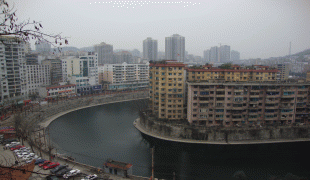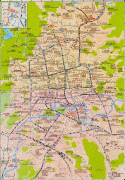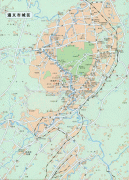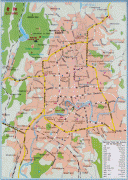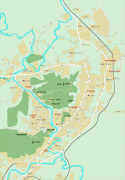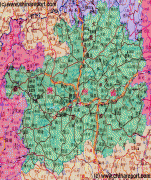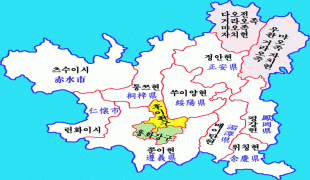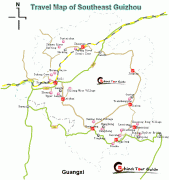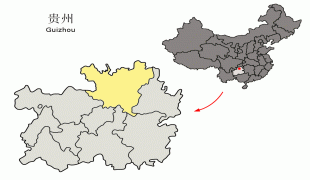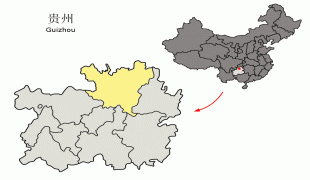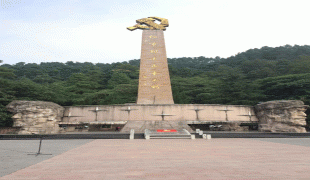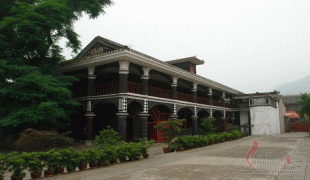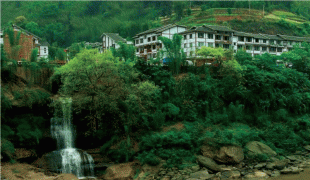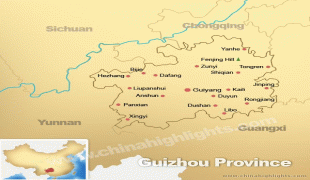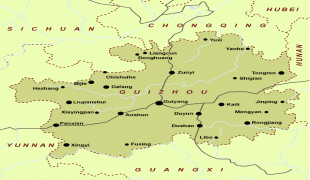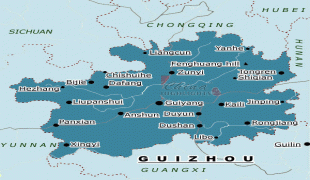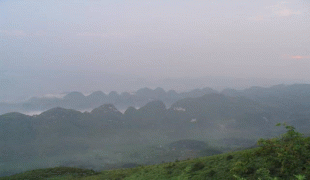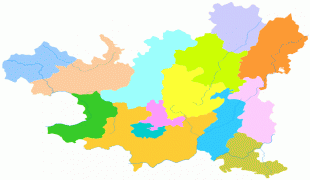Zunyi
Zunyi is known for being the location of the Zunyi Conference in 1935, where Mao Zedong was first elected to the leadership of the Chinese Communist Party during the Long March.
The area of Zunyi was originally inhabited by the Tongzi people during the Paleolithic. Later, its territory was a part of several kingdoms. Zunyi was considered to be the center of the Yelang kingdom. The region around Zunyi first came under Chinese rule during Han dynasty, during the reign of Emperor Wu of Han. After the Han dynasty collapsed, the area remained under nominal Chinese control, but much of the administration was left to local, non-Han chiefs. In the 7th century CE, the area came under regular Chinese administration during the Tang dynasty, Zunyi was placed under the new Bo Prefecture (Bozhou).
Towards the end of the Tang, Bozhou was conquered by the Nanzhao Kingdom. However, it soon gained independence as the Chiefdom of Bozhou in AD 876. The chiefdom became an autonomous prefecture of the Song and subsequent dynasties, while the ruling Yang family held power in Zunyi for more than seven centuries. Bozhou rebelled against the Ming dynasty in 1589, resisting the Ming for more than a decade before its eventual destruction in 1600. Subsequently, Zunyi Prefecture was established, with the present-day city of Zunyi becoming the prefectural seat. Zunyi retained its status as a prefectural seat through the Qing dynasty. After the Xinhai Revolution, Zunyi was redesignated as a county in 1914.
In 1935, the Zunyi Conference took place in the city, resulting in Mao Zedong becoming the de facto leader of the Chinese Communist Party.
During the country's the First Five-Year Plan, Zunyi was redesignated as a city, and experienced considerable growth and transformation.
Map - Zunyi
Map
Country - China
 |
 |
| Flag of China | |
Modern Chinese trace their origins to a cradle of civilization in the fertile basin of the Yellow River in the North China Plain. The semi-legendary Xia dynasty in the 21st century BCE and the well-attested Shang and Zhou dynasties developed a bureaucratic political system to serve hereditary monarchies, or dynasties. Chinese writing, Chinese classic literature, and the Hundred Schools of Thought emerged during this period and influenced China and its neighbors for centuries to come. In the third century BCE, Qin's wars of unification created the first Chinese empire, the short-lived Qin dynasty. The Qin was followed by the more stable Han dynasty (206 BCE–220 CE), which established a model for nearly two millennia in which the Chinese empire was one of the world's foremost economic powers. The empire expanded, fractured, and reunified; was conquered and reestablished; absorbed foreign religions and ideas; and made world-leading scientific advances, such as the Four Great Inventions: gunpowder, paper, the compass, and printing. After centuries of disunity following the fall of the Han, the Sui (581–618) and Tang (618–907) dynasties reunified the empire. The multi-ethnic Tang welcomed foreign trade and culture that came over the Silk Road and adapted Buddhism to Chinese needs. The early modern Song dynasty (960–1279) became increasingly urban and commercial. The civilian scholar-officials or literati used the examination system and the doctrines of Neo-Confucianism to replace the military aristocrats of earlier dynasties. The Mongol invasion established the Yuan dynasty in 1279, but the Ming dynasty (1368–1644) re-established Han Chinese control. The Manchu-led Qing dynasty nearly doubled the empire's territory and established a multi-ethnic state that was the basis of the modern Chinese nation, but suffered heavy losses to foreign imperialism in the 19th century.
Currency / Language
| ISO | Currency | Symbol | Significant figures |
|---|---|---|---|
| CNY | Renminbi | ¥ or 元 | 2 |
| ISO | Language |
|---|---|
| ZH | Chinese language |
| UG | Uighur language |
| ZA | Zhuang language |






